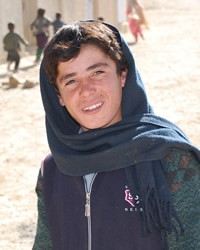From ancient times, Afghanistan has been the crossroads of Asia. The ethnically mixed Aimaq tribes formerly stretched from northeastern Iran into western and central Afghanistan, where they still reside. Aimaq are known as formidable warriors. They live semi-nomadic lives, traveling seasonally to graze their herds and/or subsisting as sedentary farmers and carpet weavers in mud-brick villages.
Strong tribal and family loyalties create difficult barriers for the message of God's grace found in Jesus. In addition, the Aimaq live in remote areas of Afghanistan. Scripture resources are needed in the Aimaq language.
Ask God to soften the hearts of the Aimaq toward the gospel message, and that they will hunger for the grace found in Jesus.
Pray for the few believers among the Aimaq by asking God to make their love increase and overflow for each other as well as others.
Ask God to give them courage and wisdom so they can represent the holiness and presence of our God and Father.
Scripture Prayers for the Aimaq in Afghanistan.
| Profile Source: Joshua Project |

























